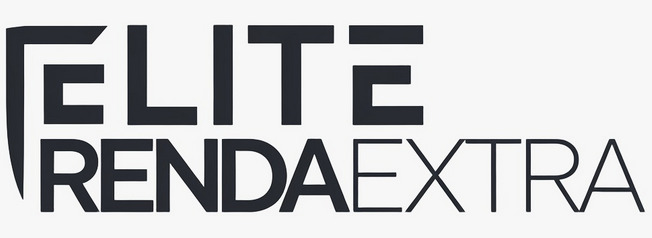Navigating the world of personal finance can sometimes feel complex, especially when considering borrowing. If you’re in the United Kingdom and exploring options for a significant sum, such as a personal loan between £5,000 and £50,000, understanding the landscape is key to making a sound choice.
This particular range of borrowing can cater to a variety of important life events or financial goals, from substantial home improvements to consolidating existing debts. Taking the time to explore your options thoroughly allows you to make an informed decision that aligns with your financial circumstances and future aspirations.
Understanding Personal Loans in the UK
Before diving into the specifics of amounts like £5,000 to £50,000, it’s beneficial to have a clear understanding of what a personal loan entails, particularly within the UK context. This knowledge forms the foundation for making well-informed borrowing decisions.
What Exactly is a Personal Loan?
A personal loan is a sum of money borrowed from a financial institution, such as a bank, building society, or online lender, which you then repay over an agreed period. In the UK, most personal loans are ‘unsecured’. This means you don’t usually have to offer an asset, like your home or car, as collateral for the loan. The lender makes their decision based on your creditworthiness and ability to repay.
These loans come with a predetermined repayment schedule, typically involving fixed monthly payments that cover both the principal amount borrowed and the interest charged. This predictability can be helpful for budgeting.
Key Characteristics of UK Personal Loans
Several features typically define personal loans available in the United Kingdom:
- Fixed Interest Rates: The majority of UK personal loans come with a fixed interest rate. This means the interest rate stays the same for the entire duration of the loan, ensuring your monthly repayments also remain consistent. This offers stability and predictability in your financial planning.
- Defined Loan Term: When you take out a personal loan, you agree to repay it over a specific period, known as the loan term. Terms can vary, often ranging from one to seven years, though some lenders might offer shorter or longer periods for certain loan amounts.
- Regular Repayments: Repayments are usually made in equal monthly instalments. This regularity helps borrowers manage their finances and budget effectively throughout the life of the loan.
- Unsecured Nature: As mentioned, most personal loans in the UK are unsecured. This differs from secured loans, like mortgages, where an asset is pledged as security.
Common Uses for Personal Loans
Individuals in the UK utilise personal loans for a wide array of purposes. The flexibility of a personal loan means it can be applied to various significant expenditures. Common uses include:
- Home Improvements: Funding renovations, extensions, or essential repairs to a property.
- Debt Consolidation: Combining multiple existing debts (like credit cards or store cards) into a single loan, often with the aim of securing a lower interest rate or simplifying repayments.
- Car Purchase: Financing the acquisition of a new or used vehicle.
- Major Life Events: Covering costs associated with weddings, educational courses, or other significant personal milestones.
- Large Purchases: Paying for expensive items like high-end electronics or furniture.
Understanding these fundamental aspects of personal loans provides a solid starting point for anyone considering this form of borrowing.
Navigating the £5,000 to £50,000 Loan Range
The specific loan range of £5,000 to £50,000 covers a significant spectrum of financial needs. It’s a popular bracket because it allows for substantial projects or purchases without venturing into the larger sums typically associated with mortgages or extensive business financing. Exploring options within this range requires careful consideration.
Why This Specific Range is Significant
Loans between £5,000 and £50,000 represent a considerable financial commitment. The lower end, £5,000, can be invaluable for more modest projects or purchases, such as upgrading home appliances, covering unexpected repair bills, or financing a special holiday. As you move towards the upper end, £50,000, the funds can facilitate more ambitious undertakings. This might include extensive home renovations, consolidating larger amounts of debt, or even contributing towards significant educational fees.
Lenders often have different interest rate tiers and criteria for loans within this band, making thorough comparison crucial. The amount you wish to borrow will influence the interest rates offered and the repayment terms available.
Typical Scenarios for Loans of This Size
Considering what others typically use these loans for can provide context. Some common scenarios for UK personal loans from £5,000 to £50,000 include:
- Major Home Renovations: A new kitchen or bathroom, a loft conversion, or landscaping a garden can easily fall into this price bracket. Such improvements can also add value to your property.
- Significant Debt Consolidation: If you have multiple high-interest debts, consolidating them into a single personal loan within this range could simplify your finances and potentially reduce your overall interest payments.
- Purchasing a Vehicle: While some may opt for car finance, a personal loan offers ownership from day one and can be used for new or used cars, motorcycles, or even campervans.
- Funding Educational Pursuits: Postgraduate studies, specialist training courses, or even covering living expenses while studying can be supported by a loan of this size.
- Supporting a Small Business (Personal Capacity): While business loans exist, some individuals might use a personal loan for initial start-up costs if they meet the lender’s criteria for personal use.
- Covering Wedding Expenses: The average cost of a wedding in the UK can fit well within this loan range, allowing couples to manage expenses without depleting savings.
Understanding the potential uses helps in assessing whether a personal loan in this range is the right financial tool for your specific circumstances.
Factors to Consider When Exploring Your Options
When you begin to explore UK personal loans from £5,000 to £50,000, several critical factors warrant your attention. A comprehensive assessment of these elements will help you identify a loan that is not only affordable but also well-suited to your individual needs and financial situation.
Interest Rates (APRs)
The Annual Percentage Rate (APR) is one of the most important figures to compare. The APR reflects the total cost of borrowing over a year, including the interest rate and any other standard charges. A lower APR generally means a cheaper loan. For personal loans in the UK, the advertised ‘representative APR’ is the rate that at least 51% of accepted applicants will receive. However, the actual rate you are offered may be different and will depend on your credit history, the amount you wish to borrow, and the loan term.
Loan Term (Repayment Period)
The loan term is the length of time you have to repay the loan. A longer term will typically result in lower monthly payments, but you’ll likely pay more interest overall. Conversely, a shorter term means higher monthly payments, but the total interest paid will be less. It’s about finding a balance between manageable monthly outgoings and the total cost of the loan.
Eligibility Criteria
Lenders have specific criteria that applicants must meet. These usually include:
- Age: Typically, you need to be at least 18 years old. Some lenders may have an upper age limit.
- Residency: You’ll usually need to be a UK resident.
- Income: Lenders will want to see evidence of a regular income to ensure you can afford the repayments. Minimum income requirements can vary.
- Credit History: Your credit score and report play a significant role. A good credit history generally improves your chances of approval and can lead to more favourable interest rates.
It’s advisable to understand these criteria before making a formal application.
Fees and Charges
While many UK personal loans have no arrangement or setup fees, it’s important to check for any potential additional costs. One common charge to be aware of is an early repayment charge (ERC). If you plan to pay off your loan ahead of schedule, some lenders may charge a fee, often equivalent to one or two months’ interest. Always read the terms and conditions carefully.
Lender Reputation and Reviews
Consider the reputation of the lender. Look for established financial institutions or reputable online lenders. Reading customer reviews and checking for any regulatory information can provide insights into their service quality and business practices. Choosing a trustworthy lender can make the borrowing experience smoother.
The Application Process: A General Overview
Understanding the typical steps involved in applying for a personal loan can help demystify the process. While specifics can vary between lenders, the general journey often follows a similar pattern.
Initial Research and Comparison
The first step is to research and compare different loan products. Comparison websites can be useful tools, but also consider looking directly at the websites of banks, building societies, and other credit providers. Pay attention to APRs, loan terms, and any fees.
Checking Eligibility (Soft Checks)
Many lenders offer an eligibility checker or a ‘soft search’ facility. This allows you to see how likely you are to be approved for a loan without affecting your credit score. This is a valuable tool for shortlisting potential lenders before making a full application.
Formal Application
Once you’ve chosen a lender and are confident about your eligibility, you can proceed with a formal application. This usually involves providing detailed personal and financial information. This can often be done online, over culprits or in-branch.
Documentation Typically Required
Lenders will need to verify your identity and income. Commonly requested documents include:
- Proof of identity (e.g., passport, driving licence)
- Proof of address (e.g., utility bill, bank statement)
- Proof of income (e.g., recent payslips, bank statements)
Having these documents ready can speed up the application process.
Decision and Fund Disbursement
After you submit your application and any required documentation, the lender will conduct a full credit check and assess your affordability. They will then inform you of their decision. If approved, you’ll receive a loan agreement to review and sign. Once the agreement is finalised, the funds are typically disbursed directly into your nominated bank account, sometimes within a few hours or days.
Benefits of Exploring Different Loan Options
Taking the time to thoroughly explore different personal loan options, rather than settling for the first offer encountered, can yield several significant benefits. This due diligence is a cornerstone of responsible borrowing.
Finding a Competitive Rate
Perhaps the most obvious benefit is the potential to secure a more competitive interest rate (APR). Even a small difference in APR can lead to considerable savings in interest payments over the life of the loan, especially for larger amounts borrowed over longer terms.
Securing Suitable Loan Terms
Different lenders offer varying loan terms. By exploring, you can find a repayment period that aligns comfortably with your monthly budget and your overall financial plan. Some may prefer shorter terms to clear debt faster, while others may need longer terms for lower monthly payments.
Avoiding Unfavourable Conditions
Careful comparison allows you to scrutinise the terms and conditions of each loan offer. This helps in identifying and avoiding loans with undesirable features, such as high early repayment charges, inflexible payment options, or other restrictive clauses.
Responsible Borrowing: Key Considerations
Borrowing any sum of money, including personal loans between £5,000 and £50,000, is a serious financial commitment. Practising responsible borrowing is paramount to ensure that the loan serves its intended purpose without causing undue financial strain.
Affordability: Can You Comfortably Make the Repayments?
Before applying for any loan, honestly assess whether you can comfortably afford the monthly repayments. This involves looking at your income and outgoings and ensuring there’s enough surplus to cover the loan payment without stretching your finances too thinly. Remember to account for potential changes in your circumstances.
The Importance of a Budget
A detailed personal or household budget is an invaluable tool. It helps you understand where your money is going and how much you can realistically allocate to loan repayments. If you don’t have a budget, creating one should be a priority before taking on new debt.
Understanding the Total Cost of Borrowing
Look beyond the monthly repayment figure. Understand the total amount you will repay over the entire loan term, including all interest and any applicable fees. This gives you a clearer picture of the true cost of the loan and helps in comparing different offers more effectively.
Alternatives to Consider
While a personal loan can be a suitable option for many, it’s always wise to consider if there are alternatives that might better suit your situation. Depending on your needs, this could include using savings, a 0% purchase credit card (for smaller amounts and shorter terms), or other forms of finance. However, each alternative has its own pros and cons that need careful evaluation.
Ultimately, choosing to take out a personal loan in the UK, especially for amounts ranging from £5,000 to £50,000, requires careful thought and diligent research. By understanding what these loans entail, what factors to weigh up, and the importance of responsible financial habits, you can navigate your options more effectively.
Making an informed decision is about empowering yourself with knowledge. This allows you to select a financial product that not only meets your immediate needs but also supports your long-term financial well-being, ensuring that borrowing is a positive step towards achieving your goals.



